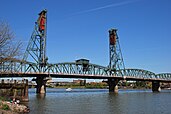|
Browse the Featured content, Portals, Categories, or the A–Z index. | |
|
New to read or editing Wikipedia? Read the Overview, the Editing Tutorial, the Common Questions, or the Help pages. Check the Site news for news about Wikipedia, and the Community portal to learn about projects you can get involved in. Still have questions? Head to the Help desk, the Reference desk, or the Village pump. | ||
|
|
|
|
Images on Wikipedia which the editing community finds "beautiful, stunning, impressive, and/or informative" are declared Featured Pictures. Today's featured picture {| role="presentation" style="margin:0 3px 3px; width:100%; box-sizing:border-box; text-align:left; border-collapse:collapse; "
|
|}
|
Wikipedia is hosted by the Wikimedia Foundation, a non-profit organization that also hosts a range of other projects Wikipedia's sister projects {|width="100%" align="center" cellpadding="4" style="text-align:left; background-color: transparent;"
|
|}
|
This Wikipedia is written in English. Many other Wikipedias are available; some of the largest are listed below. Wikipedias in other languages
|
.")













